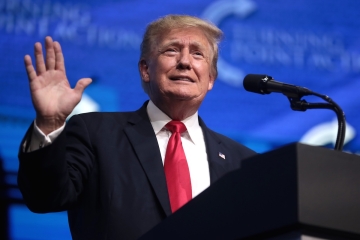When my eldest son Culver was in elementary school, he was an avid reader, but I couldn’t get him to touch anything but science fiction. By the time he was eight, I was becoming concerned that he would never read anything else, so I headed to Bank Street Bookstore, a wonderful children’s bookstore on the west side of Harlem. A young woman who worked there approached me to ask how she could help. When I described my dilemma, she smiled, “I’ve seen this before—you just haven’t found the right books.” She asked me more about my son and began picking out books outside of the sci-fi genre, drawing on what appeared to be an encyclopedic knowledge of high-quality children’s literature.
Culver was enraptured with Sarah’s picks. Thanks to her selections, his reading took an omnivorous turn and I regularly returned to the store for more recommendations. Just around that time, in 2006, I opened the first Success Academy and had to stock our classroom libraries. I ordered the pre-set publisher’s collections that are used by so many schools—but I was shocked by how little the sales people knew about what they were selling. My experience buying books for my own children had led me to conclude that we were in a golden age of children’s literature, but the books the publishers sent in no way reflected that reality.
So, I returned to Bank Street and asked Sarah, whose recommendations had inspired Culver’s passion for reading, to recommend books for our libraries. Eventually, I hired her as our first director of children’s literature, so that all kids in our schools could have access to great books and have their passions represented. She helped us hand-pick fiction, poetry, and nonfiction books for our classroom libraries, and for our K–4 and middle school curriculum. We sought out books that would help our scholars fall in love with the written word; books that featured beautiful illustrations, eloquent writing, and complex and resonant ideas and themes; whose layered meaning would spark classroom debate and beg rereading. (We share our K–4 book lists, and other aspects of our K–4 THINK Literacy curriculum, at no charge via the Success Academy Ed Institute.)
Most public schools exhibit a pervasive disregard for text quality and content, and it is a missed opportunity. Voracious reading is a critical way to build background knowledge and vocabulary, to cultivate students’ capacity for analysis and critical thinking, and to support their development as fluid, expressive writers. But these benefits don’t accrue if students are reading books with unimaginative illustrations, limited vocabulary, shallow ideas, and a narrow range of topics. This applies as much to kindergarteners as it does to middle and high schoolers, and it is the impetus for our fierce engagement with literature at Success Academy.
Even before children can decode, they can grapple with complex ideas. Therefore, while we have a strong phonics program in kindergarten and first grade, we also devote ample time to reading books with powerful illustrations and intriguing stories that can support robust analytical discussion. For example, Caps for Sale—a favorite among our kindergartners even though few can read it on their own—is a great story for digging into character: What does the peddler’s response to the monkeys reveal about his personality? How do we know? In class discussions about Corduroy, our kindergartners come to profound insights about the themes of friendship and home, of being lost and found.
Text quality is also important for modeling strong writing. In our first-grade writing unit on personal narratives, for example, we inform and inspire scholars throughout the unit with great personal narratives—such as Aunt Flossie’s Hats (and Crab Cakes Later) and First Come the Zebra. As we read and analyze these books, scholars grow in their understanding of how to use imagery, word choice, and story structure to convey important information about the narrator. When they write their own narratives, they work on applying these newfound insights.
Careful text selection is also a perfect opportunity to intentionally build background and cultural knowledge, while exposing students to a rich variety of genres. We love poetry at Success Academy, and by the time our scholars reach the end of elementary school, they have read Emily Dickinson, Langston Hughes, Robert Lewis Stevenson, Maya Angelou, Victor Hugo, and many others. They have read and analyzed fairy tales, folktales, and myths from all over the world and understand the origin and meaning of common expressions such as “the Midas touch,” “a Herculean task,” and “slow and steady wins the race.”
Furthermore, by strategically selecting texts across genres to highlight a myriad of cultures, histories, and identities, we give our scholars a foundation of knowledge about their own heritage and that of other groups. From “Lowji Comes to America,” about a boy immigrating from Bangladesh and adapting to his new home; to Mountains on the Moon, a novel that combines Chinese folklore with fantasy, to biographies of African-American frontiersmen, inventors, and artists, text selection is a vital way to provide scholars with an inclusive and multicultural educational experience.
Regardless of the genre, we choose texts based, above all, on the power of their ideas. We believe that reading is thinking, and at Success Academy, we work hard to select texts that are worth thinking about. Ultimately, this is the foundational ingredient of a rigorous, sophisticated literacy curriculum—and it is a simple and low-cost way that all schools can improve the education they give their students.
(For complete information on the fiction, nonfiction, poetry, and short texts included in our K–4 literacy curriculum, including free book lists for each grade, visit the Success Academy Education Institute.)
Editor’s note: This piece originally appeared in a slightly different form on Linkedin.
The views expressed herein represent the opinions of the author and not necessarily the Thomas B. Fordham Institute.




